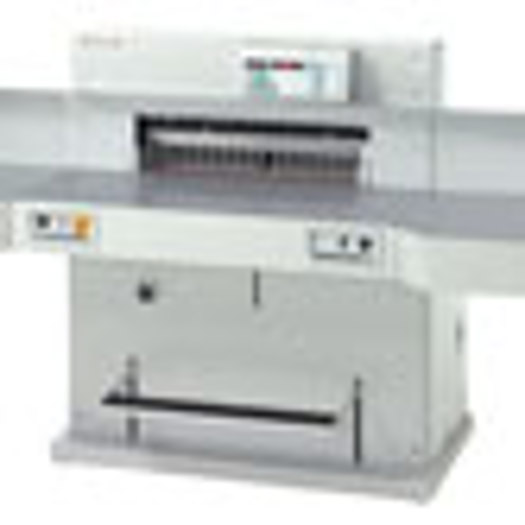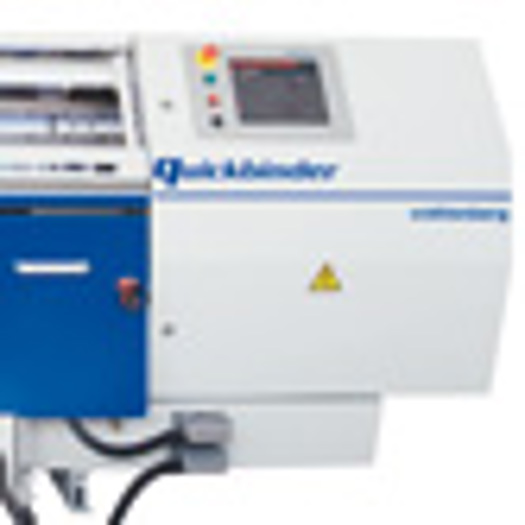When looking to buy a guillotine or another piece of materials handling equipment, health and safety should be at the forefront of your mind.
Within a print environment the need to lift and turn heavy piles of paper crops up frequently, but such activity can be a H&S officer's nightmare so materials handling kit, such as joggers and pile hoists and turners can be a valuable addition to your press hall. Such machines not only take the strain out of lifting, but also boost productivity. Pile turners, for example, allow you to turn paper on the correct machine board ready to feed into the press, and to turn them after printing for folding.
Regular checks
The risks associated with guillotines are similar to those of other materials handling kit, with the added danger that any bladed machine carries. Checks should be carried out on guillotines every six months in order for them to be covered by insurance policies - something that should be rigorously adhered to as employers are liable for work-related injuries.
"Test the blade for any chips," advises Peter Jolly, UK marketing manager for Duplo. "Also check that the clamp is firm and doesn't allow the paper stack to move during cutting."
For obvious reasons, the attraction of secondhand machines is heightened in a recession, although some suppliers have noticed an upturn lately. "When things were really bad, we were selling secondhand guillotines," says Dean Stayne, sales director at Terry Cooper Services. "However, over the past three or four months, we have been selling new guillotines again."
While the tough market conditions mean more secondhand guillotines have been bought, many printers are also opting for in-house servicing to save costs. This is a potential cause of problems, according to Jolly.
"This is maybe fine with creasers or numbering machines, but the health and safety implications in using a sub-standard guillotine could be more critical," he says.
When buying a guillotine, check the service history - if there is one. "Often there is no record; it's not like buying a car," says Stayne.
It's also worth taking a look at the knife and clamp area. In terms of knife choice, high-speed steel is more popular for blades, even though Tungsten lasts longer.
"Tungsten is rare to find and more expensive, but it lasts longer. You get more use out of the blade before you have to sharpen it," says Stayne.
WHAT'S NEW IN GUILLOTINES & MATERIALS HANDLING
· Friedheim International took on the UK sales and service agency for Wohlenberg guillotines and binders from Manroland GB last November
· In December, finishing equipment manufacturer Duplo International launched a UK-specific website for its Ideal guillotines range. The move came in the wake of a number of sales milestones for the manufacturer
· B1 printer Cre8ive Press planned to increase its productivity by as much as 40% after installing a Perfecta 115-TS guillotine and a VAC-Turbo PowerCollator, both from GAE last month
· In June last year, one of the Ministry of Defence’s design and print departments completed a ‘refresh’ of its entire facility after an investment in Morgana finishing kit. The investment included an EBA 551 programmatic guillotine
· Stockton-on-Tees based printer Falcon Press installed the CCM Premier guillotine from Terry
Cooper Services (TCS). The fully automated machine replaced an aging Itoh guillotine and has a 115cm cutting width










